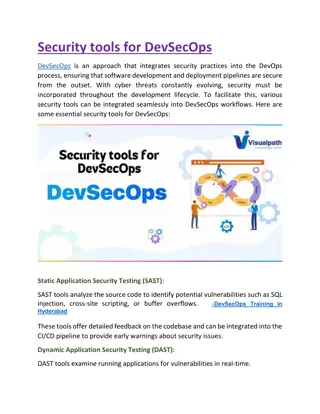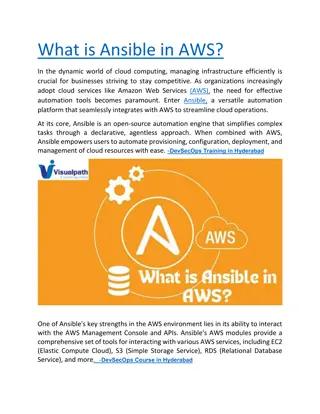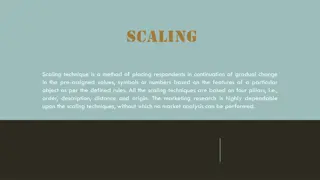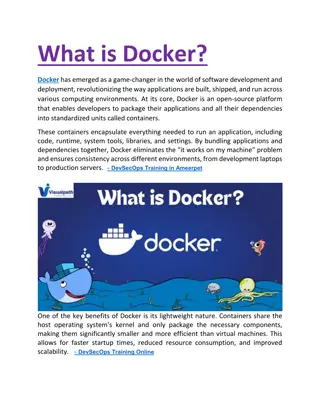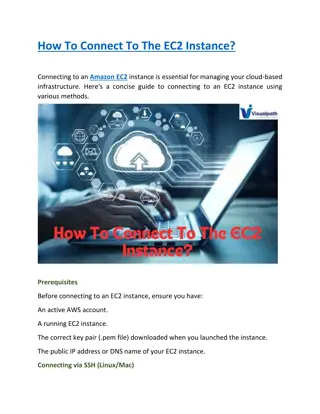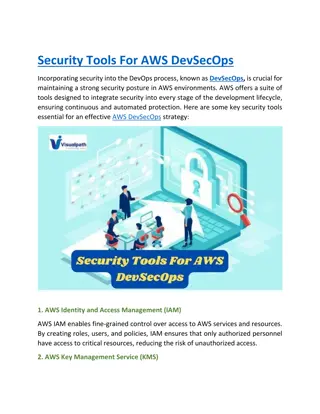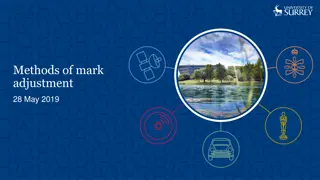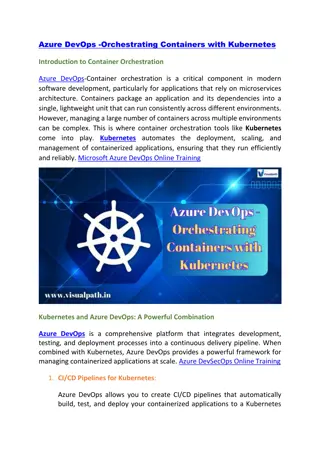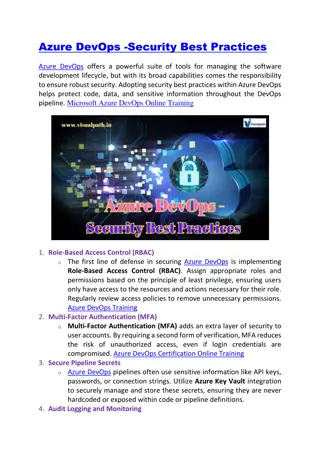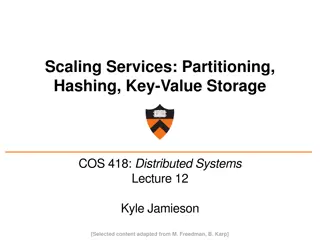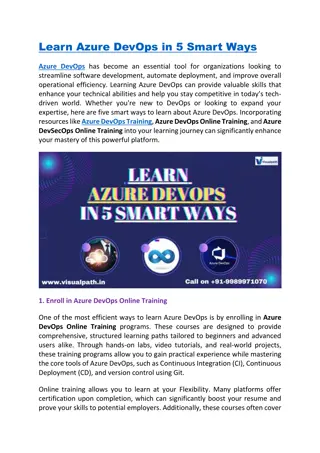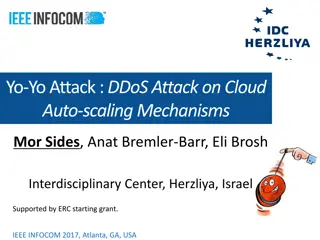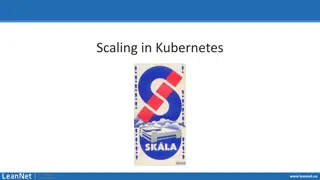
Comcast DevSecOps Transformation Success Story
Discover how Comcast's DevSecOps transformation led to a significant reduction in security incidents, empowering developers with automated security testing tools and DevSecOps coaches to enhance their practices seamlessly within existing CI/CD pipelines.
Download Presentation

Please find below an Image/Link to download the presentation.
The content on the website is provided AS IS for your information and personal use only. It may not be sold, licensed, or shared on other websites without obtaining consent from the author. If you encounter any issues during the download, it is possible that the publisher has removed the file from their server.
You are allowed to download the files provided on this website for personal or commercial use, subject to the condition that they are used lawfully. All files are the property of their respective owners.
The content on the website is provided AS IS for your information and personal use only. It may not be sold, licensed, or shared on other websites without obtaining consent from the author.
E N D
Presentation Transcript
Scaling DevSecOps at Comcast SE489: DevOps Engineering 1
Introduction Comcast is the largest American multinational telecommunications conglomerate. It is the second-largest broadcasting and cable television company in the world by revenue (behind AT&T) It is the largest pay-TV company, the largest cable TV company and largest home Internet service provider in the United States. It provides services to U.S. residential and commercial customers in 40 states and the District of Columbia. 2
Introduction Comcast's DevSecOps transformation started small but quickly gained steam, resulting in 85% fewer security incidents in production. Starting with a staff of just 16, a small DevSecOps pilot program was launched at Comcast. Out of the telecom conglomerate's 600 application development teams, around 10 already practicing what he considered true DevOps were identified, making them ideal candidates for a DevSecOps transformation. 3
Introduction Comcast's most mature DevOps practitioners were supposed to hand off their software to the company's siloed application security team, which would then "bolt on" security. Security would send it back to the developers weeks or, sometimes, even months later. The process interrupted programmers' flow and undermined DevOps' effectiveness. 4
DevSecOps pilot For the DevSecOps pilot, the team procured and customized a suite of automated security testing tools that Comcast developers could easily integrate with their own continuous integration/continuous delivery (CI/CD) pipelines, eliminating the need to surrender their software to the AppSec team for weeks at a time. These tools work the way developers work and think the way developers think. These tools plug into developers pipeline and provide the feedback directly to you. 5
Bringing in DevSecOps coaches They rolled out the new tools to each participating development team in a 90-minute introductory workshop. They assigned each group a DevSecOps coach, who would help the developers choose a few core practices to adopt over the next three months -- for example, installing a software composition analysis (SCA) tool in the CI/CD pipeline and scanning for critical vulnerabilities. 6
Bringing in DevSecOps coaches The tooling would typically flag a handful of high-priority findings that the team could resolve over the course of a development sprint or two, with extra help available if necessary. After working its way through the critical alerts, the development team could then adjust the policy dial to not just scan code, but also block it from merging unless clean. 7
Bringing in DevSecOps coaches Critical SCA findings accounted for roughly 35% of all security incidents at Comcast. Turn the dial to 'blocking,' and you'll never have another one of those get into production ever again. 8
Bringing in DevSecOps coaches Over time, a DevSecOps coach would encourage developers to slowly turn up the heat, perhaps also scanning for high- and medium-severity vulnerabilities, for example, or adding interactive application security testing or static application security testing findings to the mix. 9
Bringing in DevSecOps coaches The coach's job was not to call your baby ugly, and it was never to tell you that you were doing it wrong. Instead, they are supposed to say, 'What's the next opportunity to improve?' With regular coaching and hourlong workshops every 90 days, a typical DevOps team at Comcast could typically reach DevSecOps maturity in about a year and a half. 10
A DevOps litmus test With early efforts going well, Comcast's DevSecOps pilot quickly grew. But an early challenge, was convincing company leadership that some development groups weren't ready to participate. Putting the cart before the horse -- introducing DevSecOps to a team that hadn't yet nailed DevOps -- would just cause frustration and waste everyone's time. 11
A DevOps litmus test To vet prospective program participants, they asked developers one key question: whether they trusted the automated tests in their pipeline to invalidate a bad artifact and keep it from getting into production. "Can you blindly make a change and push it through your pipeline and be confident it isn't going to break?" "If you can't do that, you're not doing DevOps." 12
Practicing DevSecOps at scale Soon, about 100 of Comcast's software development teams were practicing DevSecOps. The results were compelling, with those groups seeing 85% fewer security incidents in production than their legacy counterparts. 13
Practicing DevSecOps at scale Comcast's DevSecOps program was designed to scale, with dedicated coaches able to work with up to 100 development teams per quarter. To further increase scalability, Comcast also created a federated coaching program, in which someone from outside the DevSecOps pilot team -- say, a security specialist from a standalone business unit -- could train to be a DevSecOps coach. "They had to use our framework and our tooling". "And they had to shadow us three times, and then we reverse-shadowed them two times." If they passed, the federated coaches could then lead DevSecOps workshops in their own business units. 14
Results Within five years, about half of Comcast's 600-odd development teams had joined the DevSecOps transformation program. At that point, the company decided to transition the remaining teams and shut down its traditional AppSec program. Instead of a siloed team of 400 AppSec specialists, the company would have 100 DevSecOps pros. That essentially solved Comcast's cybersecurity hiring problem. They were able to do 85% better risk reduction with a quarter of the staff. 15


